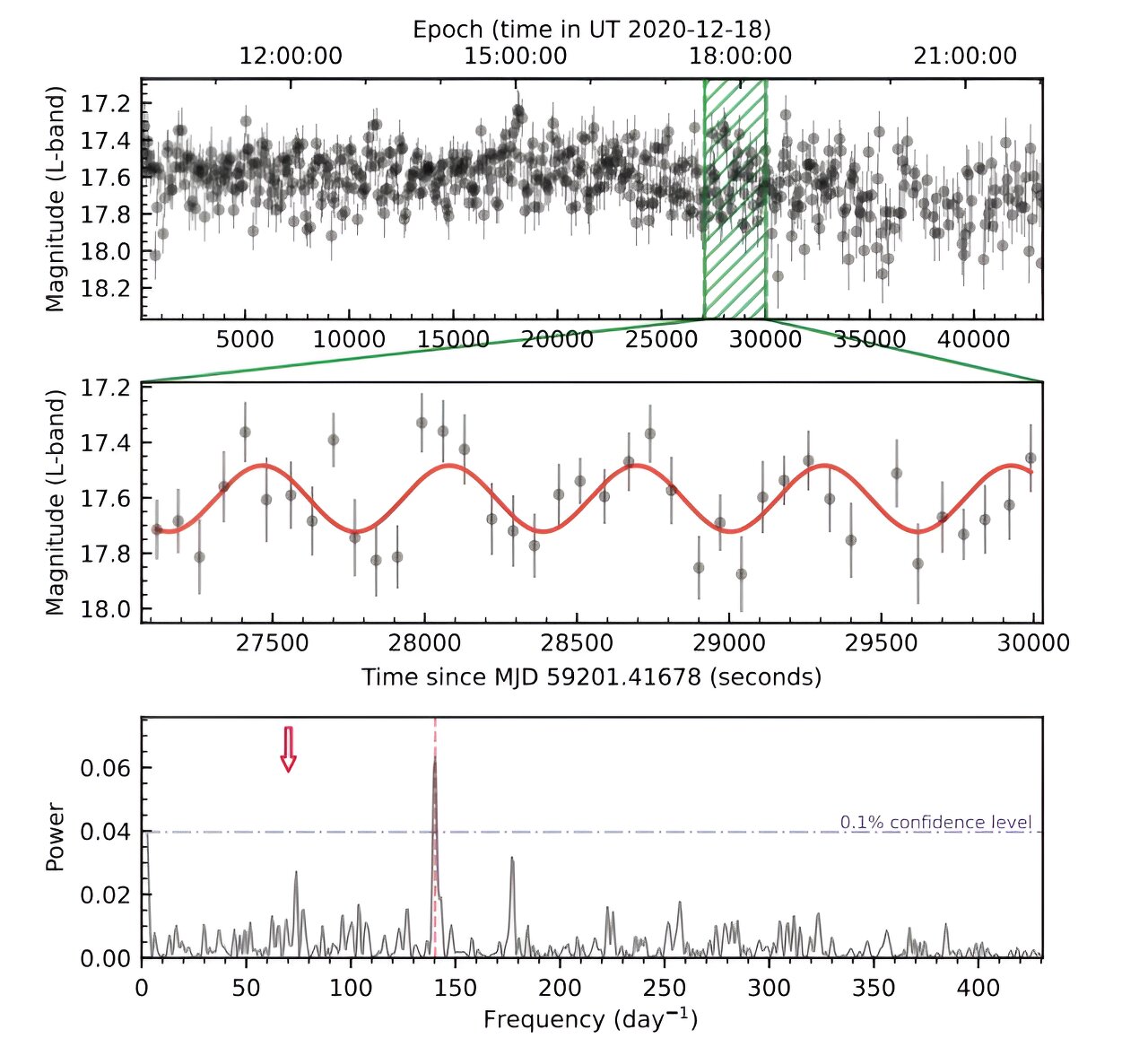Using the Tsinghua University–Ma Huateng Telescopes for Survey (TMTS), an international team of astronomers has discovered a new binary known as TMTS J052610.43+593445.1. The newfound system is an ultrashort-orbital-period binary consisting of a subdwarf star and a white dwarf companion. The finding was reported in a paper published December 21 on the preprint server arXiv.
Now, a team of astronomers led by Jie Lin of the Tsinghua University in Beijing, China, reports the detection of a new sdB binary with an extremely short orbital period. They employed TMTS to search for unusual short-period objects in our Milky Way galaxy. As a result, they discovered a dozen such objects, and one of them, which received designation TMTS J052610.43+593445.1 (or J0526 for short) turned out to be an sdB binary with an orbital period of approximately 20.5 minutes.
Lin’s team found that J0526 consists of a visible sdB star (designated J0526B), about seven times larger than the Earth, with a mass of approximately 0.33 solar masses, which is being tidally deformed by an invisible carbon–oxygen white dwarf companion (J0526A).
The observations indicate that the white dwarf is about 10 times smaller than the sun, has a mass of about 0.735 solar masses, and its effective temperature is 25,400 K. The system has an orbital period of approximately 20.506 minutes and is estimated to be located some 2,760 light years away from the Earth.
The astronomers assume that the J0526 system is currently detached. They predict that after about 1.5 million years, J0526B will overflow its Roche lobe and transfer mass toward J0526A at an orbital period of around 14 minutes. This will lead to the formation of an AM CVn star through the helium-star channel.
2024-01-03 03:00:03
Source from phys.org rnrn
